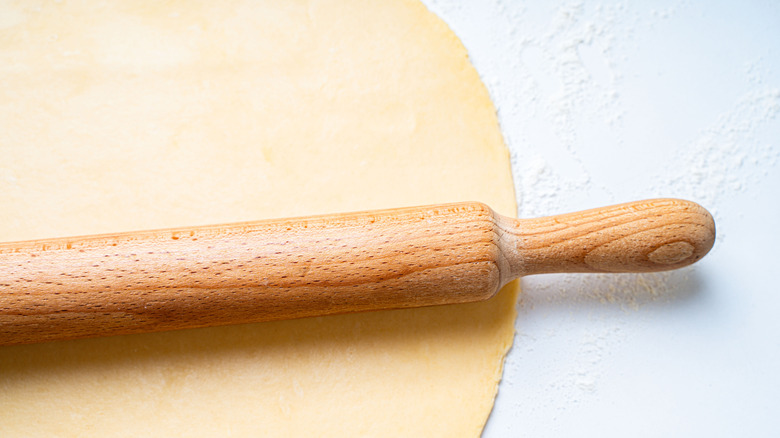What It Means When A Recipe Tells You To 'Dock The Dough'
We may receive a commission on purchases made from links.
You mixed the dough, rolled it out, and carefully shaped the crust in a pie dish –even giving it an elegantly crimped border –but now the recipe is insisting that you do something called "docking the dough." If you're a casual baker, you might find that recipes are full of unfamiliar expressions. Luckily, this is an easy one, and the step takes no time at all to complete.
To "dock the dough" simply means to puncture the surface with a few tiny pricks. Usually, this is achieved with the prongs of a fork. This step is part of the blind baking process and is particularly crucial when the pie crust and filling require different bake times. You blind bake a crust before topping it with a heaping portion of filling. During this process, the crust gets a head start in the oven, and docking the dough before blind baking prevents the crust from filling with air and rising too much.
Docking the dough
The phrase "dock the dough" pops up in plenty of pie and tart recipes, and can even benefit some pizza crusts (a perfect, crispy homemade pizza crust begins with the dough). In addition to the accessible fork method, there is a pronged, slightly intimidating-looking tool made specifically for this step, appropriately called "a dough docker." The instrument pokes tiny indentations into your dough as it rolls across the surface. The Ateco Dough Docker is a great example of this tool. Remember to create holes in the bottom as well as the sides of the crust before popping it into the oven.
Both pre-made and homemade pie crusts can be blind baked. With a little sprucing, store-bought pie crusts can be almost as good as a homemade one. In some cases, you can also swap the docking process and blind bake your crust with pie weights. Pie weights — usually ceramic or metal balls, like these ceramic reusable pie weights, keep pie dough in place and prevent it from forming air bubbles.

